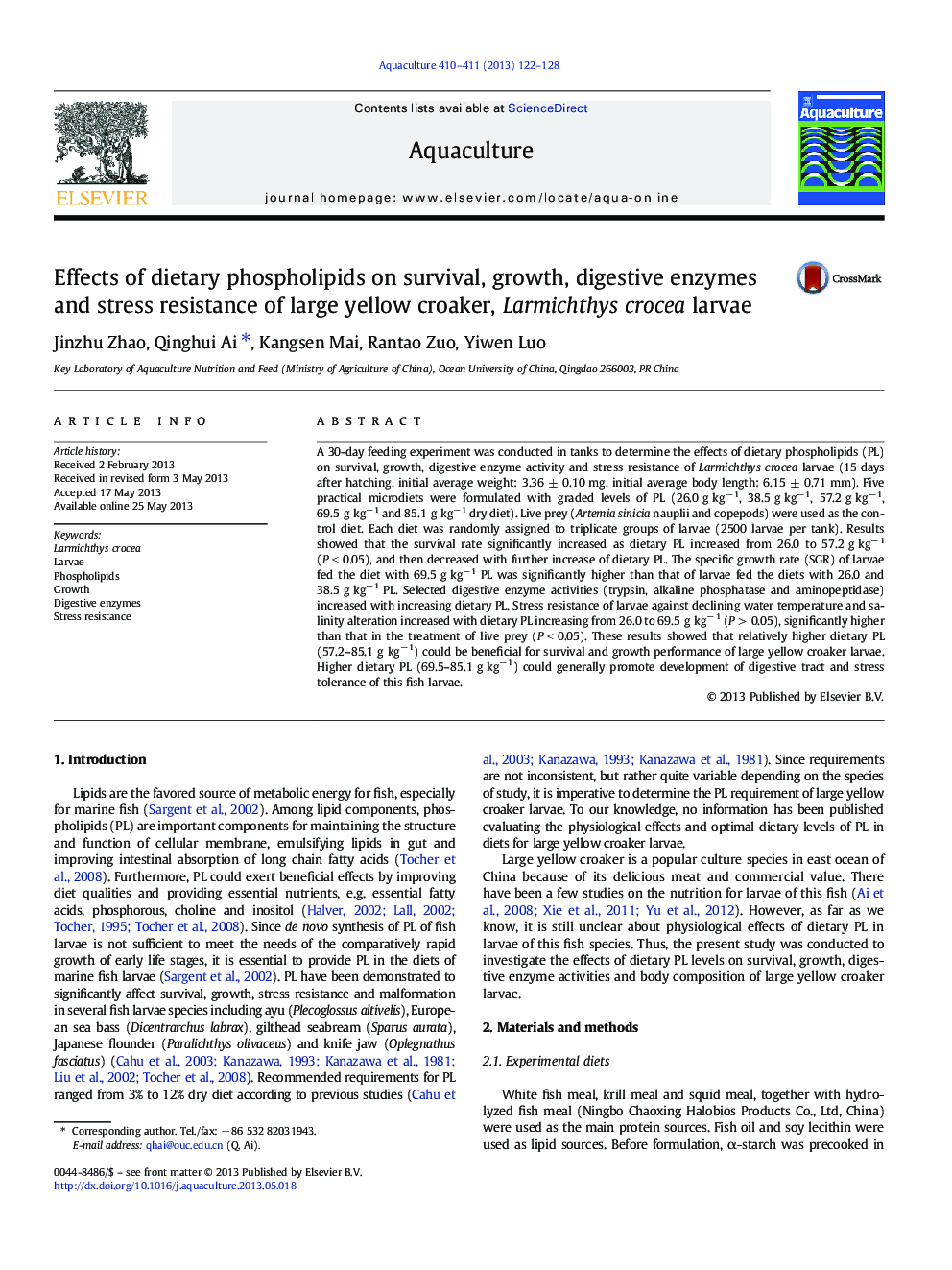| کد مقاله | کد نشریه | سال انتشار | مقاله انگلیسی | نسخه تمام متن |
|---|---|---|---|---|
| 2422083 | 1552868 | 2013 | 7 صفحه PDF | دانلود رایگان |

• Larvae survival was significantly higher in the group of 57.2 g kg− 1 of phospholipids.
• Larvae growth was significantly higher in the group of 69.5 g kg− 1 of phospholipids.
• Digestive tract development markedly improved as dietary phospholipids increased.
• Stress resistance of larvae markedly increased as dietary phospholipids increased.
A 30-day feeding experiment was conducted in tanks to determine the effects of dietary phospholipids (PL) on survival, growth, digestive enzyme activity and stress resistance of Larmichthys crocea larvae (15 days after hatching, initial average weight: 3.36 ± 0.10 mg, initial average body length: 6.15 ± 0.71 mm). Five practical microdiets were formulated with graded levels of PL (26.0 g kg− 1, 38.5 g kg− 1, 57.2 g kg− 1, 69.5 g kg− 1 and 85.1 g kg− 1 dry diet). Live prey (Artemia sinicia nauplii and copepods) were used as the control diet. Each diet was randomly assigned to triplicate groups of larvae (2500 larvae per tank). Results showed that the survival rate significantly increased as dietary PL increased from 26.0 to 57.2 g kg− 1 (P < 0.05), and then decreased with further increase of dietary PL. The specific growth rate (SGR) of larvae fed the diet with 69.5 g kg− 1 PL was significantly higher than that of larvae fed the diets with 26.0 and 38.5 g kg− 1 PL. Selected digestive enzyme activities (trypsin, alkaline phosphatase and aminopeptidase) increased with increasing dietary PL. Stress resistance of larvae against declining water temperature and salinity alteration increased with dietary PL increasing from 26.0 to 69.5 g kg− 1 (P > 0.05), significantly higher than that in the treatment of live prey (P < 0.05). These results showed that relatively higher dietary PL (57.2–85.1 g kg− 1) could be beneficial for survival and growth performance of large yellow croaker larvae. Higher dietary PL (69.5–85.1 g kg− 1) could generally promote development of digestive tract and stress tolerance of this fish larvae.
Journal: Aquaculture - Volumes 410–411, 10 October 2013, Pages 122–128